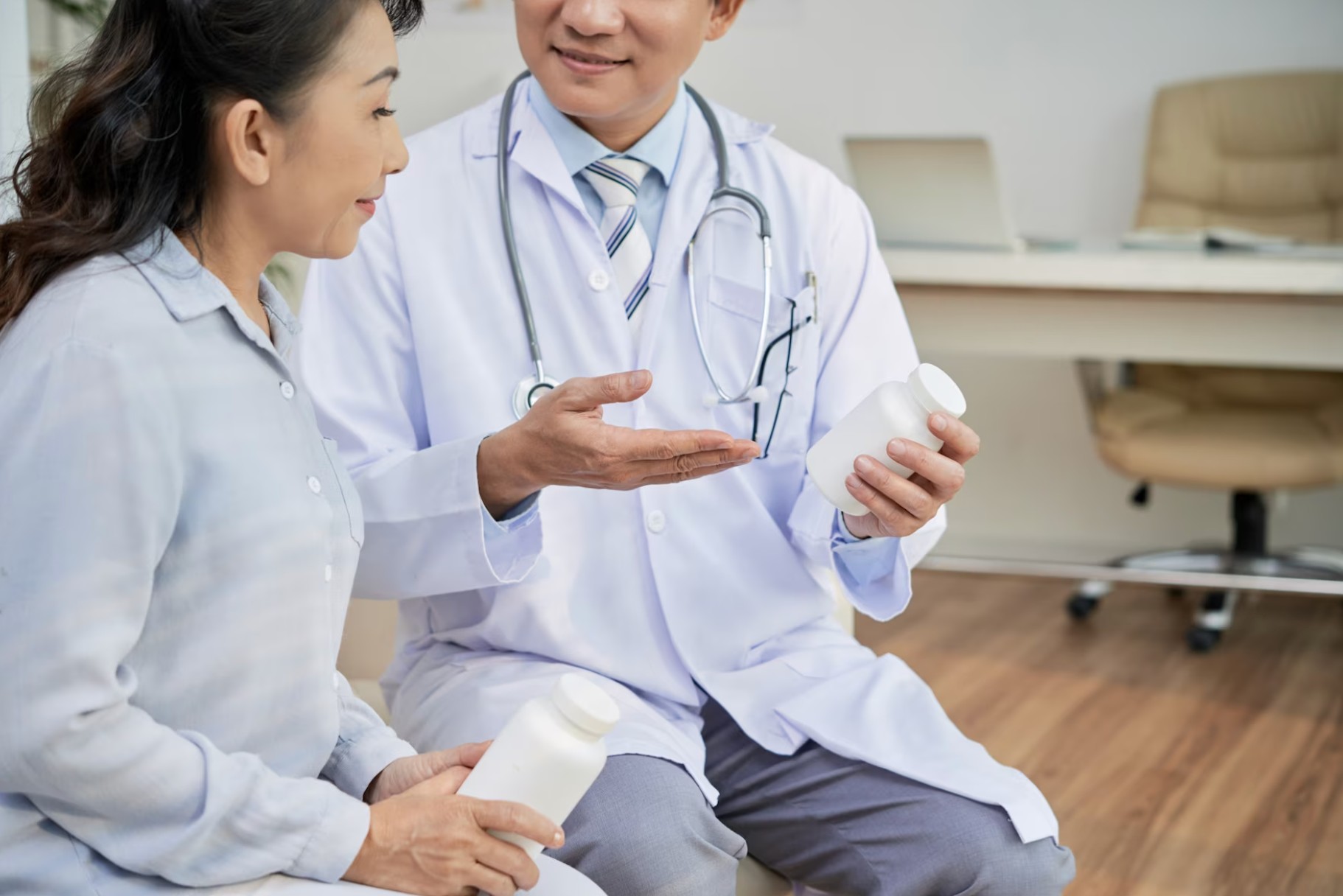
Start to find answers
If you have any questions about TCM and our practices, read through our FAQ below to find out what we can help you with, and how to focus towards recovering today.
Contents
- What is TCM, and how does it work?
- What is a TCM diagnosis?
- What kinds of conditions can be treated by TCM?
- What is acupuncture?
- Does acupuncture hurt?
- Is Acupuncture Safe?
- Are There Risks or Side Effects with Acupuncture?
- How does the patient feel after treatment?
- What is Auricular Medicine?
- What is an Auricular Diagnosis?
- What is Auricular Treatment?
- What is Scalp Acupuncture?
- What is Acupressure?
- What is Moxibustion?
- What is Cupping?
- What is Chinese Herbal Medicine?
- What is Qigong?
- How many treatments are required? When is result seen?
- Will my extended health insurance cover acupuncture?
- What preparation is suggested before a treatment?
- Can Western and Chinese Medicine be integrated?
- What is a Drug & Substance Abuse Treatment Program?
- What is an Health Maintenance Program?
What is TCM and how does it work?
Traditional Chinese Medicine (TCM) is a complete and comprehensive system of health care, which possesses two outstanding features – an holistic point of view and application of treatment according to the differentiation (including acupuncture, moxibustion, herbal medicine, Tui Na (Chinese Massage), diet therapy, Qi Gong and other related treatment methods). For thousands of years, TCM has formed its unique medical theory and practices in prevention and treatment.
TCM applies Yin – Yang principle to explain everything, including the human body. In the natural world, Yin and Yang are two opposing forces in the universe. Yin qualities are negative, down, dark, cold, water etc; Yang qualities are positive, up, bright, hot, fire, etc. These two forces are always in balance in the natural world. In a human body particularly, if Yin and Yang attain perfect harmony, the person remains healthy. If they are out of balance, a disease occurs.
TCM emphasizes the restoration and retention of a balanced state of Yin-Yang in the human body. This holistic, natural approach works primarily through stimulation of the patients’ own healing ability. Doctors of TCM assess many factors in the physical, emotional, spiritual and environmental realms of patients’ lives to specify the exact nature of the imbalance between Yin and Yang. Then a course of specific treatment is prescribed. In the treatment acupuncture may be used together with other therapeutic techniques according to the patient’s condition. Once the natural forces of the body become balanced, the disease is eliminated.
Today TCM has become increasingly popular around the world. Accordingly, the World Health Organization has listed 104 conditions in different systems of the body acupuncture can treat.
What is a TCM diagnosis?
A TCM diagnosis is based on information collection and data analysis.
TCM process of information collection consists of Four Clinical Examinations:
- Observation: appearance of complexion, eyes, tongue, nails, hair, skin, gait, stature and affect
- Sound & Smell: sound of voice, breath, vomit and cough; odor of breath, skin and secretion.
- Interview: history of current complaints and related factors, patterns of sleep, appetite, digestion, bowel movement, urine, perspiration, pain, emotional features, life style features and gynecological features, health history and family health history.
- Touch: palpation of the body to discover body temperature, body moisture, tenderness, swelling, phyma or tumor; taking the pulse in different locations.
Through analysis and evaluation of a patient’s health history, a TCM doctor can identify the nature, location, and the cause of a disease or injury.
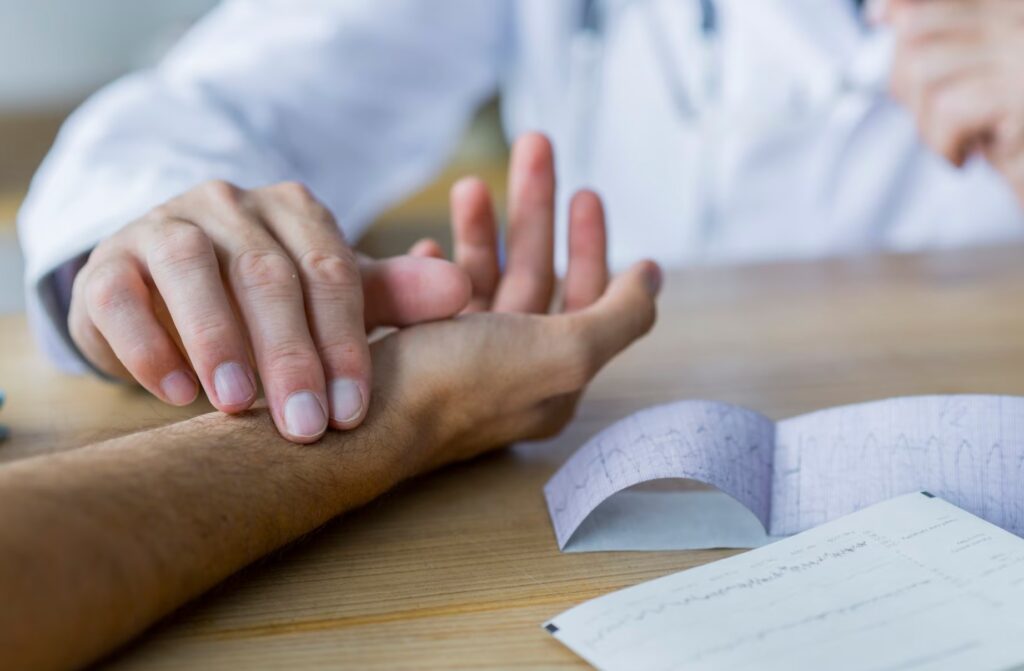
What kinds of conditions can be treated by TCM?
TCM is well known for treating painful conditions such as migraine, arthritis, soft tissue injuries and neuralgia. In fact, it is effective for many other acute or chronic health concerns associated with the cardiovascular, respiratory, gastrointestinal, urinary, nervous, reproductive, endocrine and autoimmune systems. The following conditions are recognized by the World Health Organization (WHO) as treatable by ACUPUNCTURE:
| Allergies | Anxiety & Depression | Arthritis & Joint problems |
| Asthma | Back Pain | Bell’s Palsy |
| Bladder & Kidney Problems | Carpal Tunnel Syndrome | Cerebro- vascular Accident |
| Chemo- therapy Side Effects | Chronic Fatigue | Chronic Sinusitis |
| Constipation & Diarrhea | Cough & Bronchitis | Crohn’s Disease |
| Deafness | Dizziness | Drug Addictions |
| Eczema | Fever | Fybromyalgia |
| Gynecological Disorders | Headache & Migraine | Health Maintenance |
| Shingles | High/Low Blood Pressure | Immune System Deficiency |
| Impotency | Infertility | Insomnia |
| Irregular Menstruation | Meno- pausal Syndromes | Morning Sickness |
| Neck & Shoulder Problems | Numbness Peripheral neuropathy | PMS & Menstrual Cramps |
| Psoriasis | Radio- therapy Side Effects | Hives |
| Stress & Tension | Tendinitis | TMJ |
| Toothache | and more |
Many other conditions and diseases including those functional disorders without definite diagnosis can be treated by Traditional Chinese Medicine.
What is acupuncture?
The human body is a dynamic environment of interconnecting and interacting networks. Over thousands of years, TCM mapped out the subtle networks and interrelationships that reveal the human body to be a dynamic cellular ecosystem.The early TCM practitioners discovered acupuncture points along the meridians, which are known as the energy pathways of the human body and are related to internal organ function. Upon stimulating certain points, acupuncture ensures a free flow of vital energy and corrects energetic imbalances or blockages which may be the cause of distress.
By gently inserting the needles in some acupuncture points, a TCM doctor makes a cascade of positive changes occur in the body, such as
- Elimination or reduction of pain
- Relaxation
- Detoxification
- Improvement of blood circulation
- Balance of immunity
- Balance of the endocrine system
- Balance of metabolism
- Improvement of overall functions
- Increase of energy and vitality
Modern science explains the functions of acupuncture as following: Needling the acupuncture points stimulates the nerve system to release chemicals in the muscles, the spinal cord, and the brain. These chemicals will either change the experience of pain or they will trigger the release of other chemicals and hormones in order to influence the body’s own internal regulating system. For example, during an acupuncture treatment, the computer image of the brain shows dynamic activities occur in many regions and structures in the brain. Researchers have confirmed that stimulating an acupuncture point causes the production of endorphins and simultaneously activates the immune and the endocrine systems.
Depending on the needling methods used, acupuncture can be divided into traditional body acupuncture, auricular acupuncture, scalp acupuncture, hand acupuncture and electro-acupuncture etc.
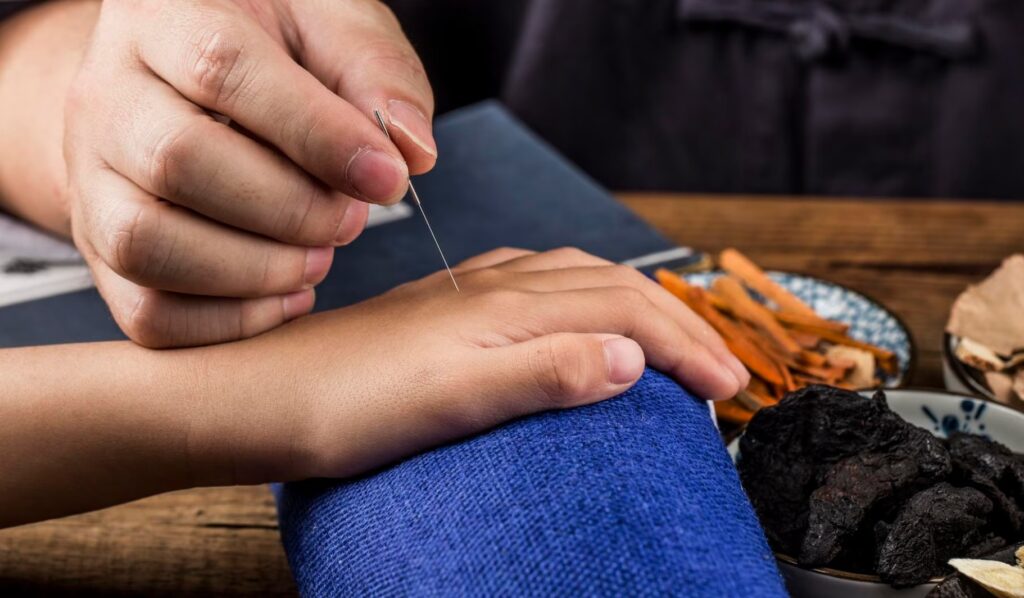
Does acupuncture hurt?
The sensation experienced by the patient during acupuncture is largely subjective and quite variable. Normally, the insertion of a needle is not felt as it enters the skin. However, when the needle reaches the acupuncture points under the skin, there may be a feeling of tingling, numbness, soreness, radiation, warmth, pressure or heaviness. Most people find the experience extremely relaxing. Some of them even fall asleep during the treatment.
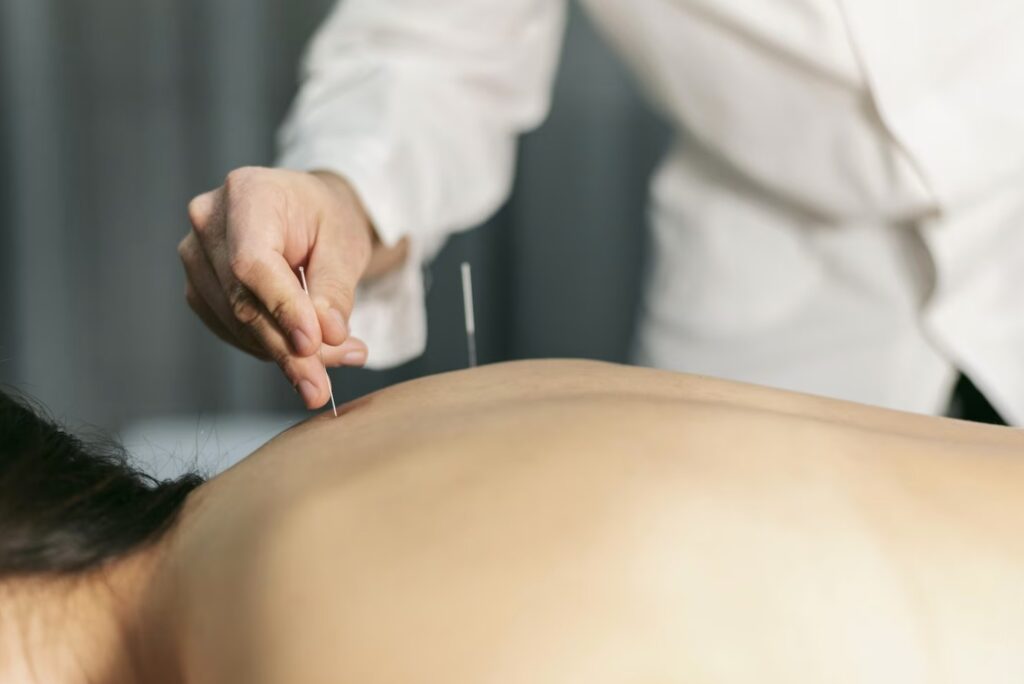
Is Acupuncture Safe?
Absolutely. The fine stainless steel needles are government approved. To avoid the risk of transmission of contagious disease, all needles are individually packaged, pre-sterilized by the manufacturer, and disposed after a single use. Acupuncturists take every precaution to sterilize their hands before they treat their patients.
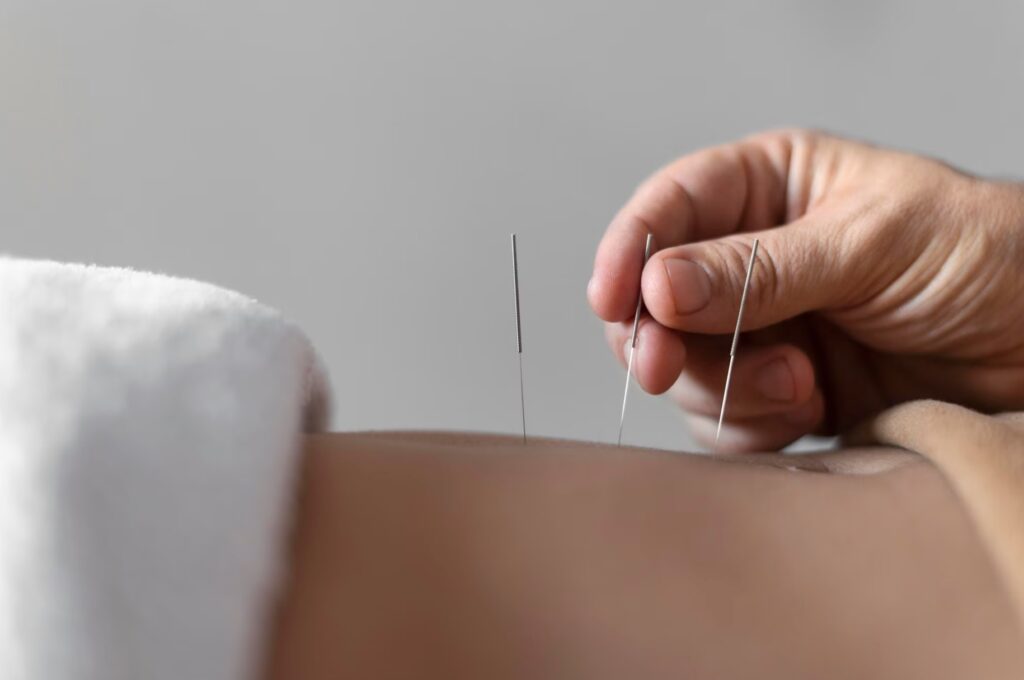
Are There Risks or Side Effects with Acupuncture?
Acupuncture aims to stimulate one’s own internal healing power. This drug-free approach is unlikely to cause any side effects as do some medications. Therefore, it is a particularly safe form of therapy.
Some people worry about the fact that needles may penetrate nerves or organs and cause serious damage. However, this possibility is very small because a qualified acupuncturist has good knowledge of anatomy and good needling technique to avoid this potential hazard. Occasionally a small amount of bleeding at the site of needled insertion occurs, and a small local bruise may result, but these are not dangerous and have never been reported as adverse reactions.
Actually, acupuncture is a very safe procedure, provided the practitioner is well trained and experienced. Over my 40 years of practice, I have never seen any damage caused by acupuncture. All the serious acupuncture adverse reactions reported in the literature are due to inadequate training, thoughtlessness or the incompetence of the practitioners. For the safety of the general public, the College of TCM and Acupuncture of B.C. advises you to seek out a licensed registrant. To find a licensed registrant in your city, you can go to www.ctcma.bc.ca or call the College of Traditional Chinese Medicine Practitioners and Acupuncturists of British Columbia at 1-(604) 638-3108.
How does the patient feel after treatment?
The needling sensation may still be experienced for an hour or so post treatment by a few patients.
About one quarter of patients feel tired. A few patients even notice a temporary worsening of symptoms or pain. These symptoms and occurrences are nothing to worry about since they are general indications that your body is trying to achieve a proper balance.
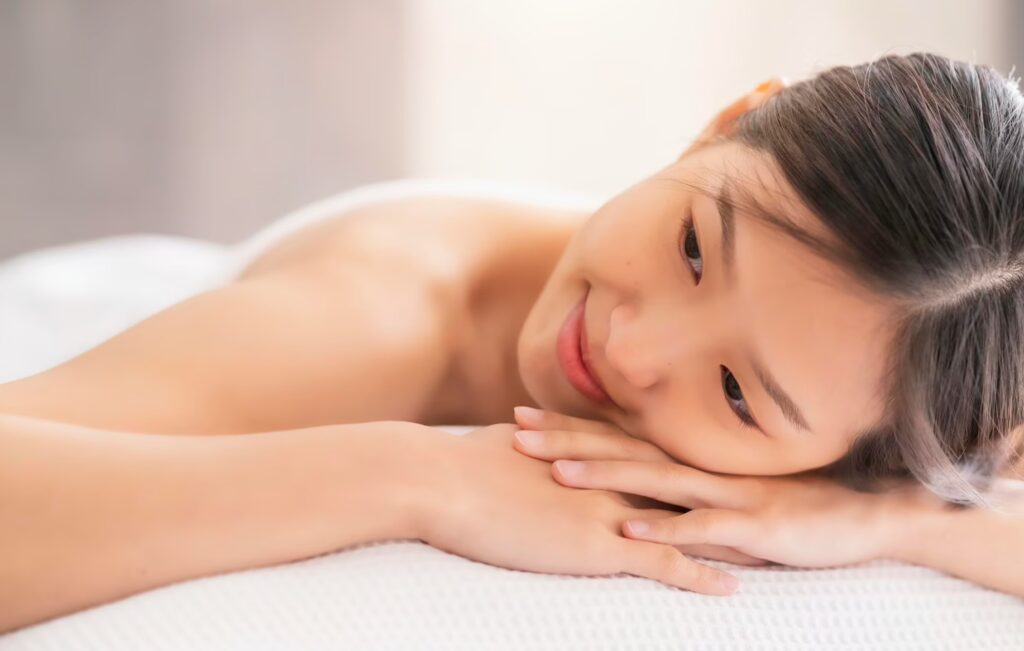
What is Auricular Medicine?
Auricular Medicine is a highly developed system which applies to the auricle to diagnose, treat, and prevent diseases. It is based upon TCM theory (such as meridian and collateral theory and Zang-Fu organ theory) and western medicine theory (such as embryology, anatomy, heredity, immunology, neurology, pathomorphology, and fluidism, etc).
The ancient Chinese physicians stimulated the ear to prevent and treat not only the diseases of the ear but some maladies in other parts of the body as well. Since the 1950s, with the theory of “reversed embryo,” proposed by a Frenchman, P. Nogier, the study of Auricular Medicine has reached a higher level. More than 200 new auricular points have been discovered. The complex biofeedback mechanisms between the human body and the ear have been deeply and widely researched.
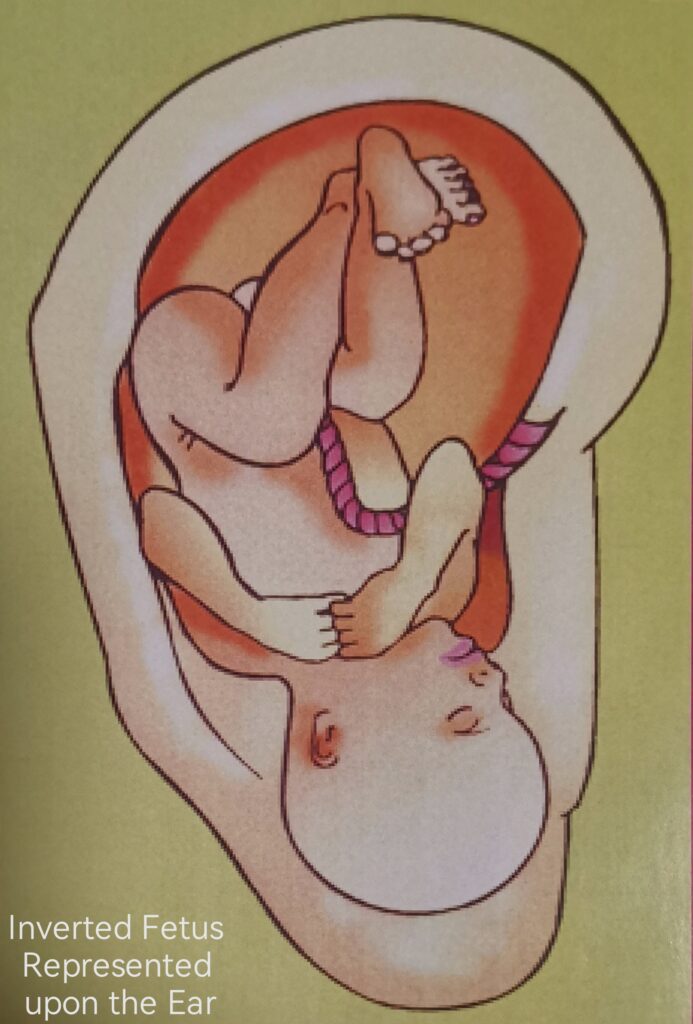
Chinese doctor Wei Chi conducted research on the ear micro-meridians and located a total of over 2800 ear acupoints using hyper-sensitive individuals of the meridian type as experimental subjects. He also identified many specific acupoints, greatly improving the precision and effectiveness of treatment.
What is an Auricular Diagnosis?
Auricular diagnosis plays a very important part in Auricular Medicine. The ear is a microcosm of the entire body. Ears record the patient’s health conditions in the past, the present and the future. TCM doctors use observation, palpation, and electrical detection to find out the positive reactions on the corresponding points. By analyzing detailed information such as discoloration, deformation, vascular dilation, pain sensitivity, electrical resistance and other irregularities, TCM doctors diagnose the patients’ diseases.
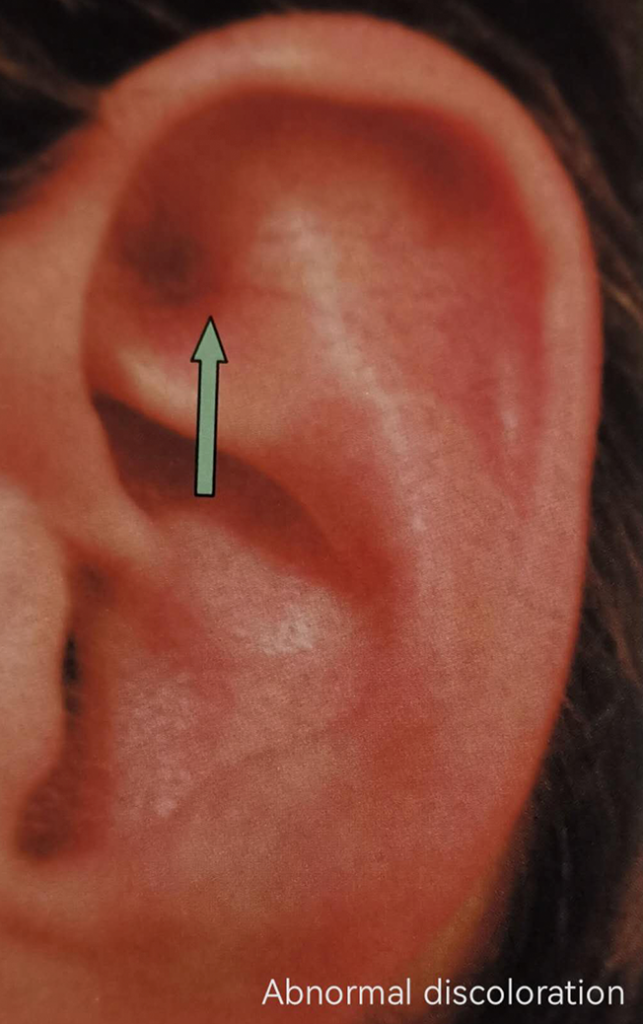
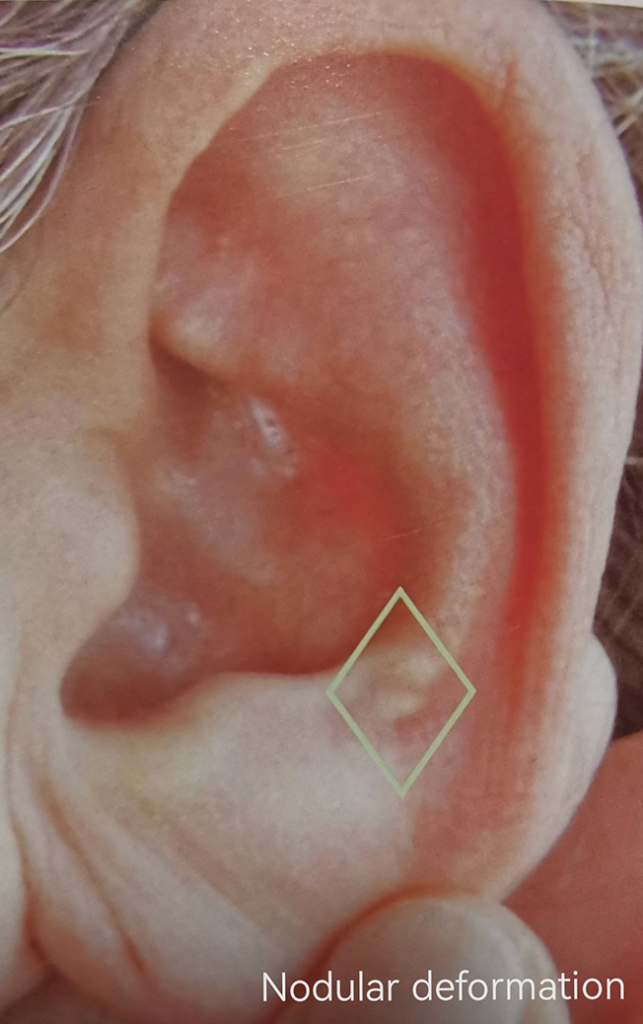
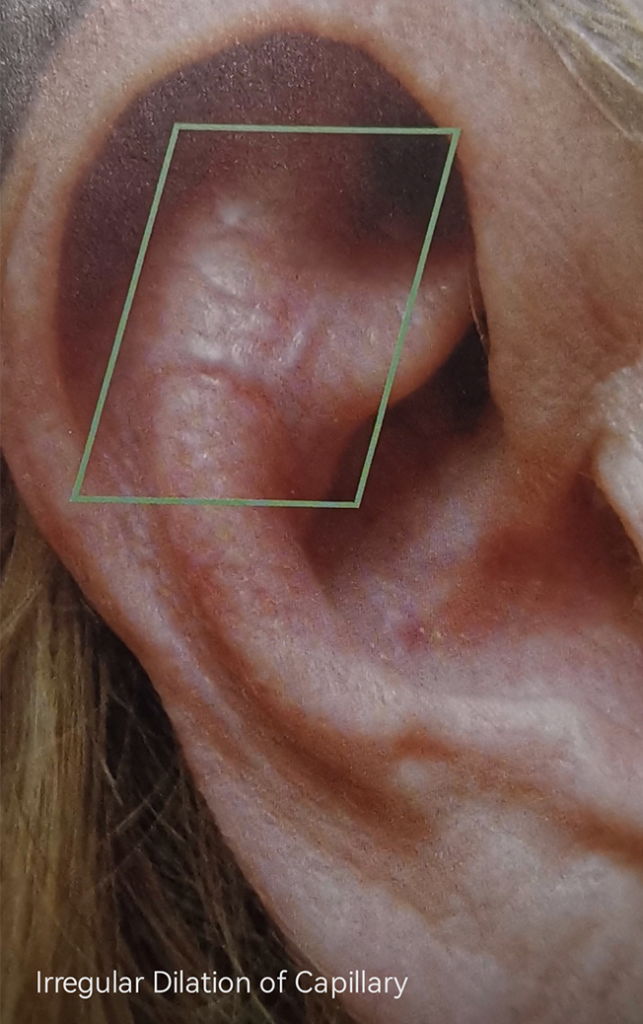
What is Auricular Treatment?
It is an approach with which TCM doctor use to cure diseases.
Ears have been used to treat diseases in China for more than 2000 years. In the ear numerous acupuncture points correspond to different parts of the body. By stimulating certain auricular points, doctors can treat the disharmony of their corresponding parts.
Of the 16 well-developed treatment methods, Auricular Acupressure and Bleeding Therapy are the most commonly used.
Auricular Acupressure
Doctors tape small seeds on selected auricular points to rouse the energy flow and cure various diseases.
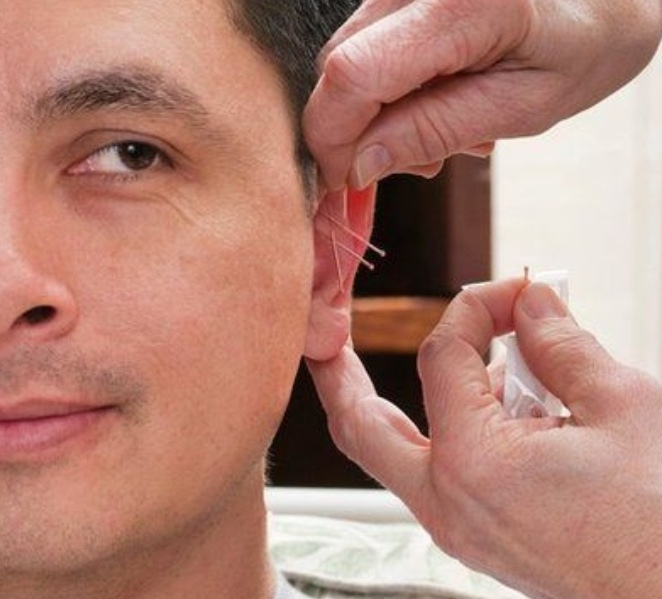
Auricular Bleeding Therapy
Doctors puncture the selected auricular point(s) to cause a little bleeding. This treatment promotes blood circulation, tranquilizes the mind, eliminates fever, detoxifies, reduces allergic reactions and relieves inflammation and pain.
What is Scalp Acupuncture?
Scalp Acupuncture is one of the modern microsystem acupuncture techniques combining Chinese needling methods with western medical knowledge of anatomy, physiology, pathology, and neurology about representative areas of the cerebral cortex. During an acupuncture treatment, very short, fine needles are placed superficially in some areas of the scalp to achieve the desired therapeutic effects.
Scalp Acupuncture is remarkable for its fast effects. Many patients notice an improvement after the first treatment. These positive responses usually continue for 3-4 days. To obtain the best results, it is often necessary to repeat the treatment.
Scalp Acupuncture treats the same variety of diseases as does the body acupuncture. Notably, it is most effective in the treatment of acute conditions, pain, nerve system disorders, and psychological and psychosomatic disorders.
What is Acupressure?
Unlike needles, acupressure is a technique by means of gentle but firm finger pressure on certain points of the body. It implements the same meridian theory to promote healing, releasing tension and increasing blood circulation. Acupressure is generally used for soft tissue injuries, relaxation, pediatric treatment, and preventive maintenance.
Small seeds are applied for acupressure on ear or hand points.
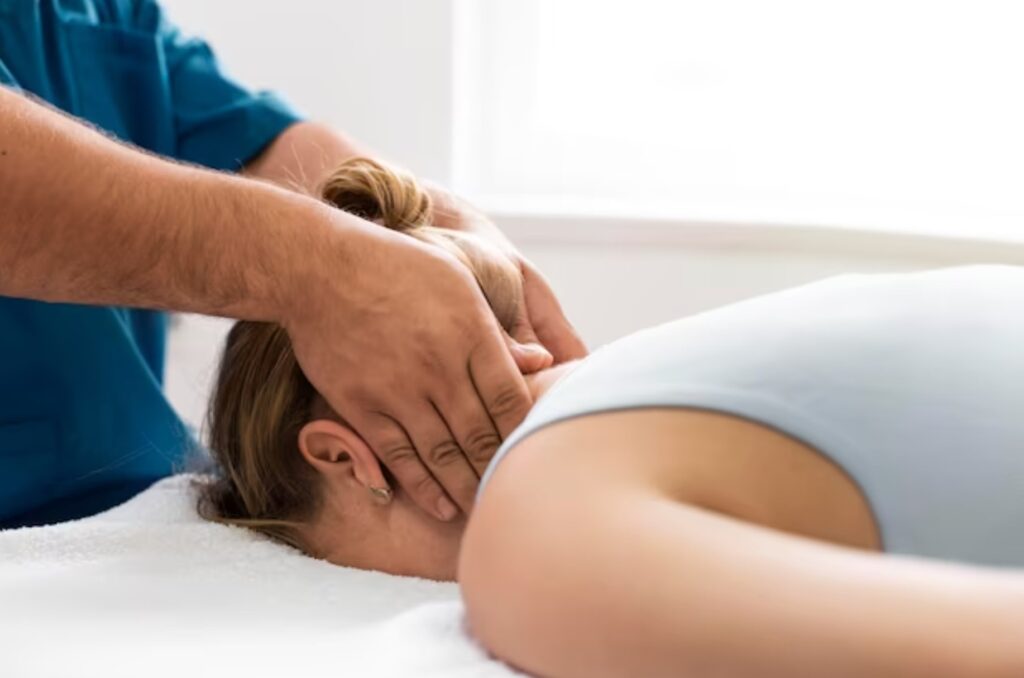
What is Moxibustion?
Moxibustion is a deep penetrating heat therapy which involves burning a moxa stick above the selected acupuncture point(s) or region(s) of the body. It can promote the circulation of energy and blood, eliminate pathogens and disperse swelling. It is commonly used for treating weakness, chronic fatigue, sensitivity to cold, poor circulation, poor digestion, allergy, certain types of arthritis, anemia, hemorrhage, high cholesterol, abnormal fetal circulation and so on. Because moxibustion can balance the immune function and delay the aging process, not only do many doctors of TCM apply moxibustion to treat patients, they also frequently and seasonally use this therapy for their own health maintenance and disease prevention.
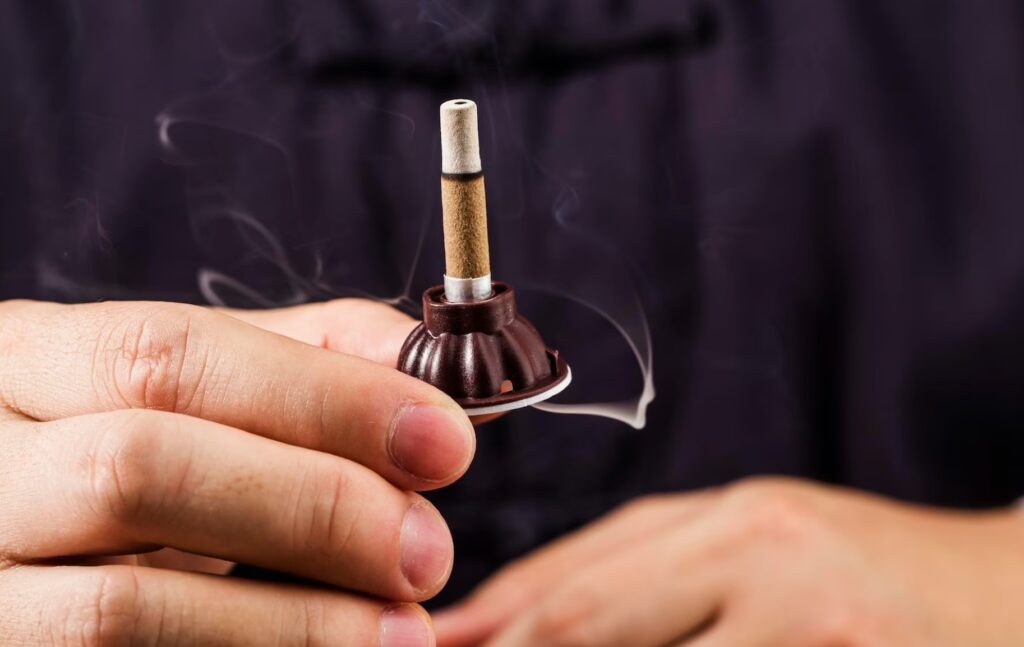
What is Cupping?
Cupping is a therapeutic modality of TCM used to treat and prevent disease. This therapy uses jars which are attached to the skin surface through vacuum pressure, causing a local congestion. This form of stimulation warms and promotes the circulation of energy and blood, expels pathogens, detoxifies the body, and disperses swelling & pain.
Cupping can be used to treat such diseases as trauma, arthritis, digestive disorders, headache, the common cold, cough, back ache, Bell’s palsy, and more. Cupping can also be used to drain pus from abscesses, and often be used with a bloodletting technique to relieve pain from acute sprains and bruises, solve skin problems, etc.
Cupping gives tissue a superb massage. Sometimes, the cups may be moved to provide an extensive form of massage and skin stimulation.
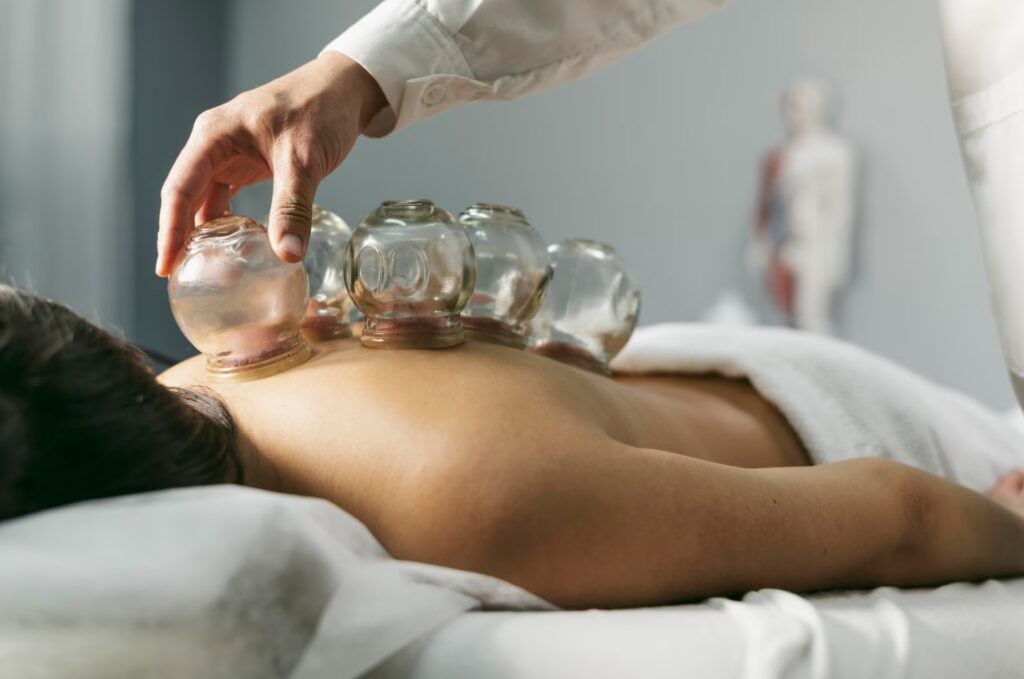
What is Chinese Herbal Medicine?
Chinese herbal medicine offers time tested remedies to treat various conditions. It consists mostly of natural herbal plants and mineral substances. Each herb has its own nature and specific functions which affect particular organs or meridians. A Chinese herbal formula usually composes several to many herbs to work synergistically. The balance and interaction of all ingredients in a Chinese herbal formula are careful monitored. The herbal combination strictly follows TCM theory to minimize side effects or toxicity and to maximize the curative effects of the herbs. The herbal formula is tailored for each individual and his specific pattern of disharmony. It seeks primarily to correct internal imbalances of the patient rather than to treat symptoms alone, and therapeutic intervention is designed to encourage the self-healing process. The herbal formula can be prescribed for both internal and external use.
Today, traditional Chinese herbal medicine is supported by laboratories with high standards of quality control. Each ingredient is tested for heavy metals, biological contamination, pesticides and authenticity.
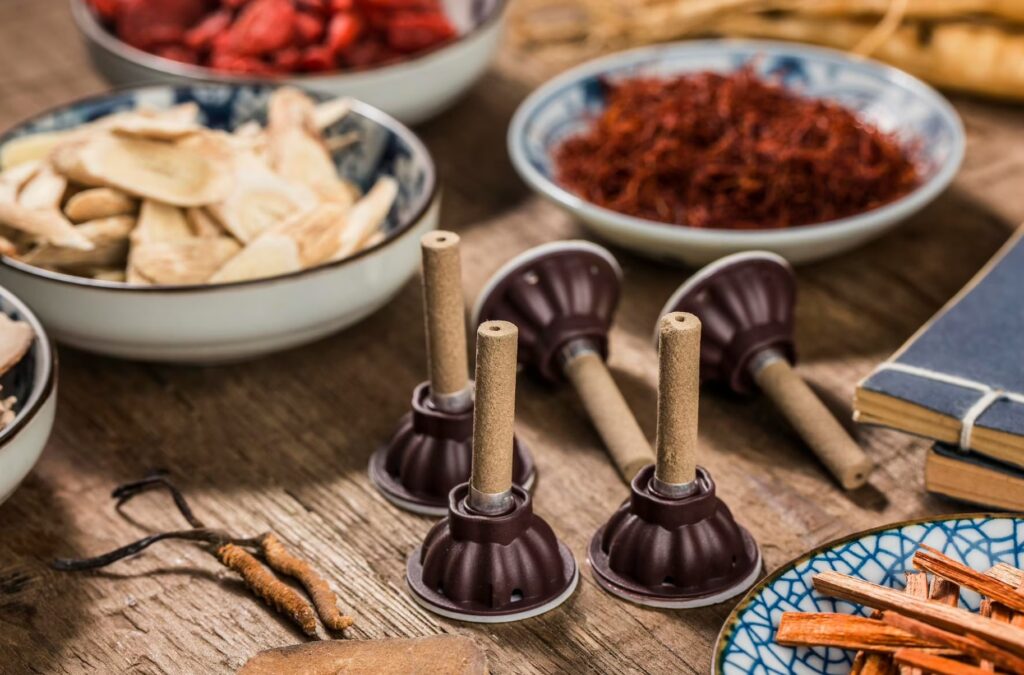
What is Qigong?
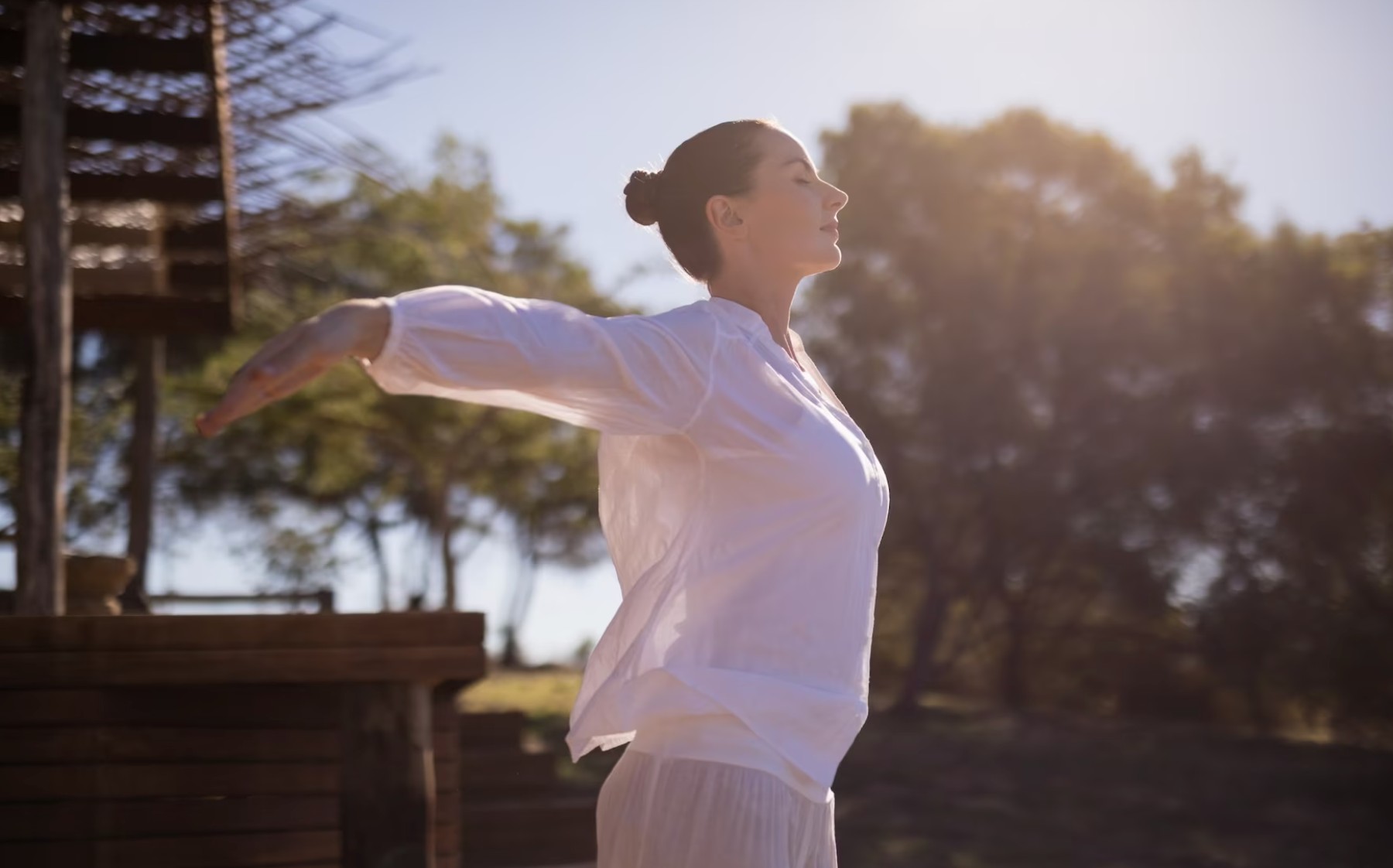
Qigong is a mind-body integrated self-healing art which consists primarily of meditation, relaxation, coordination of different breathing patterns and physical movement. Practitioners of Qigong develop an awareness of Qi sensations (energy) in their body and use their mind to guide the Qi flow. Qigong is mostly practiced for health maintenance purposes, but some are also used for therapeutic interventions.
How many treatments are required? When is result seen?
The number and frequency of treatments vary depending on the nature of the condition, the patient’s general state of health and the individual response to the treatment. An acute problem may respond to a single session, whereas a chronic problem usually needs more sessions. A series of six to ten sessions is typical. It is important to remember that acupuncture is not a single event, but rather a process which involves the activation of your body’s own ability to optimize its circulation of Qi and Blood. To achieve a desired result, treatment of one session per week is a minimum requirement. Enhancing treatment needs more sessions each week. For menstrual problem or infertility treatment, three menstrual cycles are necessary to see a difference.
For health maintenance or preventative health care, monthly visits over time or seasonal “tune ups” may be applied.
Will my extended health insurance cover acupuncture?
Many of the extended health insurance plans available in British Columbia do cover acupuncture treatments worth about $300 to $1000 per year. Payments for treatments are to be made to Dr. Shen directly. Then you can use the receipt to claim your reimbursement from your insurance company. Please check with your extended health insurance company for more information.
What preparation is suggested before a treatment?
Please do not come with an empty stomach, nor should you come after a large meal.
Please do not arrive rushed for your appointment.
Wear loose and comfortable clothing to ensure that acupuncture points easily be reached.
Please empty the bladder prior to each treatment
Can Western and Chinese Medicine be integrated?
Yes! In China today, a dual-health care system equally values both Western Medicine and TCM, utilizing the best of both treatment approaches to benefit patients.
In the past years, Dr. Hannah Shen has been on the research teams of two projects with the University of British Columbia and the Vancouver Detox Program both of which demonstrate the complimentary nature of using both Western medicine and TCM.
The University of British Columbia has been involved in a research study using TCM, Western medicine and a combination of both to treat Multiple Sclerosis,
The Vancouver Detox Program utilizes doctors of TCM as part of their multi-disciplinary team.
What is a Drug & Substance Abuse Treatment Program?
This is a specially designed program for people who want to quit drugs, cigarettes, alcohol or other substance abuse. A group of acupuncture/acupressure points is carefully selected. This prescription can help the patients to control cravings, to detoxify, reduce withdraw symptoms and promote recovery. It enables the patients to continue and complete the treatment. The modification of this prescription is also able to address and treat drug related diseases. Herbs / nutritional supplements may be added.
What is an Health Maintenance Program?
TCM is used not only for treating diseases, but also as preventative medicine. TCM theory pays greater attention to support health (human immune system) rather than fight disease. It is believed that preventative medicine is the best form of medicine and prevention is always more important than reaction. TCM is a real HEALTH CARE system.
In this health maintenance program, Dr. Shen selects special acupuncture points and herbal formulas to increase energy and balance immunity in order to boost overall function and optimize health. When our health is sound, we are less likely to be attacked by pathogens. This program also helps people to have clear thinking, better memory and a delay in the aging process. Consequently, people have better quality of life and longevity.